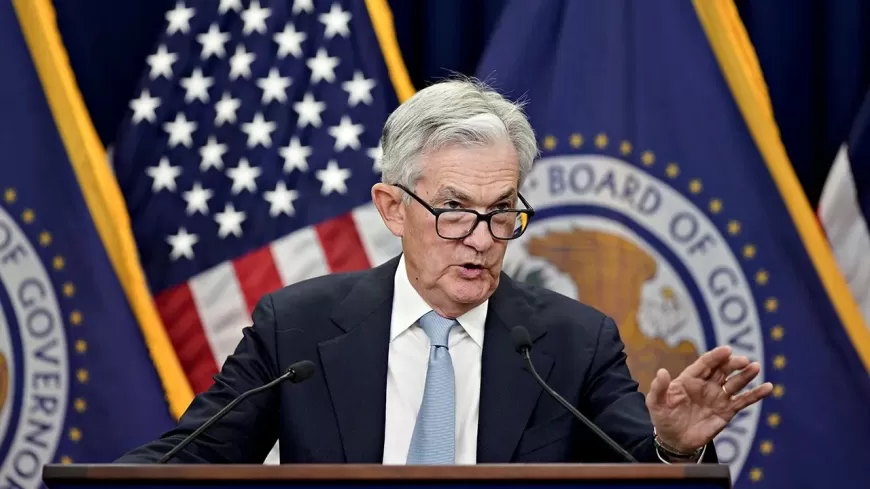Fed Prepares for Potential Rate Cuts as Inflation Falls: What It Means for the Economy?
Fed eyes rate cuts as inflation drops below 3%. Learn how upcoming data and economic trends could shape the Fed's next move and impact the economy

The latest inflation report has provided the Federal Reserve with crucial flexibility as it navigates its next steps in adjusting interest rates. For the first time since spring 2021, the consumer price index (CPI) fell below 3%, indicating a potential shift in the economic environment. This development offers the central bank a clearer path toward implementing a much-needed rate cut while also raising new questions about how deep that cut should be.
Bank of America Global Research economists highlighted that this latest report bolsters the Fed’s tendency to reduce rates, possibly as early as September. However, the debate has now transitioned from whether a cut will occur to the magnitude of the reduction. The key question facing policymakers is how much easing is necessary to stabilize inflation without derailing the ongoing economic recovery.
Market Sentiment Shifts Amid Inflation News
Market expectations surrounding the Fed’s next move have shifted in response to the latest data. On Wednesday, projections for a 50-basis-point rate cut dropped to 37% from 53% the day before. This softening of expectations comes after a turbulent week in financial markets, where uncertainty prompted some to call for an emergency rate cut outside of the Fed's usual meeting schedule. Despite this, market participants still largely anticipate lower rates in the near future, although the scope of those cuts remains in question.
The shifting expectations reflect the complexity of the situation. While inflation appears to be under control for now, the Fed must also consider other vital factors. Chair Jerome Powell has stressed the importance of analyzing additional economic data before making any decisions. These upcoming data points, which include the core PCE price index on Aug. 30, the August jobs report on Sept. 6, and a second CPI report on Sept. 11, will be critical in shaping the Fed's approach to its mid-September policy meeting.
Balancing Inflation and Labor Market Risks
The Fed's challenge is not just about controlling inflation—it's also about maintaining a healthy labor market and supporting economic growth. Although inflation has been a major concern, the central bank must now carefully assess the risks of a deteriorating job market. In the past year, the Fed pursued an aggressive tightening policy in response to rising inflation, but the possibility of recession and a weakening labor force means that a cautious approach to easing is necessary.
The Fed's dual mandate—to ensure price stability and maximize employment—will continue to play a significant role in its decision-making process. While the recent inflation data provides room for easing, the labor market's health and overall economic stability are just as crucial. The Fed must strike a balance between addressing inflation and preventing potential economic downturns.
What to Expect Moving Forward
As the Fed moves closer to its next policy meeting, economists and market analysts will closely monitor key economic indicators to gauge the central bank’s likely course of action. The core PCE price index, which is the Fed’s preferred inflation gauge, will be a critical data point. Additionally, the jobs report and the subsequent CPI reading will provide further insight into the state of the economy and help shape the Fed's decision-making process.
While many are optimistic about rate cuts, the extent of these cuts will depend on how the economy performs in the coming weeks. The Fed's decisions will not only impact financial markets but also have broad implications for consumers, businesses, and investors alike. Lower interest rates could reduce borrowing costs, stimulate consumer spending, and support business investment. However, an overly aggressive cut could risk overheating the economy or failing to address underlying economic vulnerabilities.
How Will Rate Cuts Impact the Economy?
If the Fed does move forward with a rate cut in September, it could have widespread effects on the economy. For consumers, lower interest rates would likely translate into reduced borrowing costs, making mortgages, car loans, and credit card debt more affordable. This could encourage higher spending and boost economic activity. For businesses, a cut could make it easier to finance new investments or expand operations, helping to drive growth.
However, the impact of rate cuts on inflation remains a concern. While a reduction in rates could help bolster the economy, there is always a risk that too much easing could reignite inflationary pressures. The Fed will need to be cautious to avoid undoing the progress it has made in taming inflation thus far.
Also Read: U.S. Jobless Claims Drop Unexpectedly, Easing Concerns About Labor Market Stability
































































